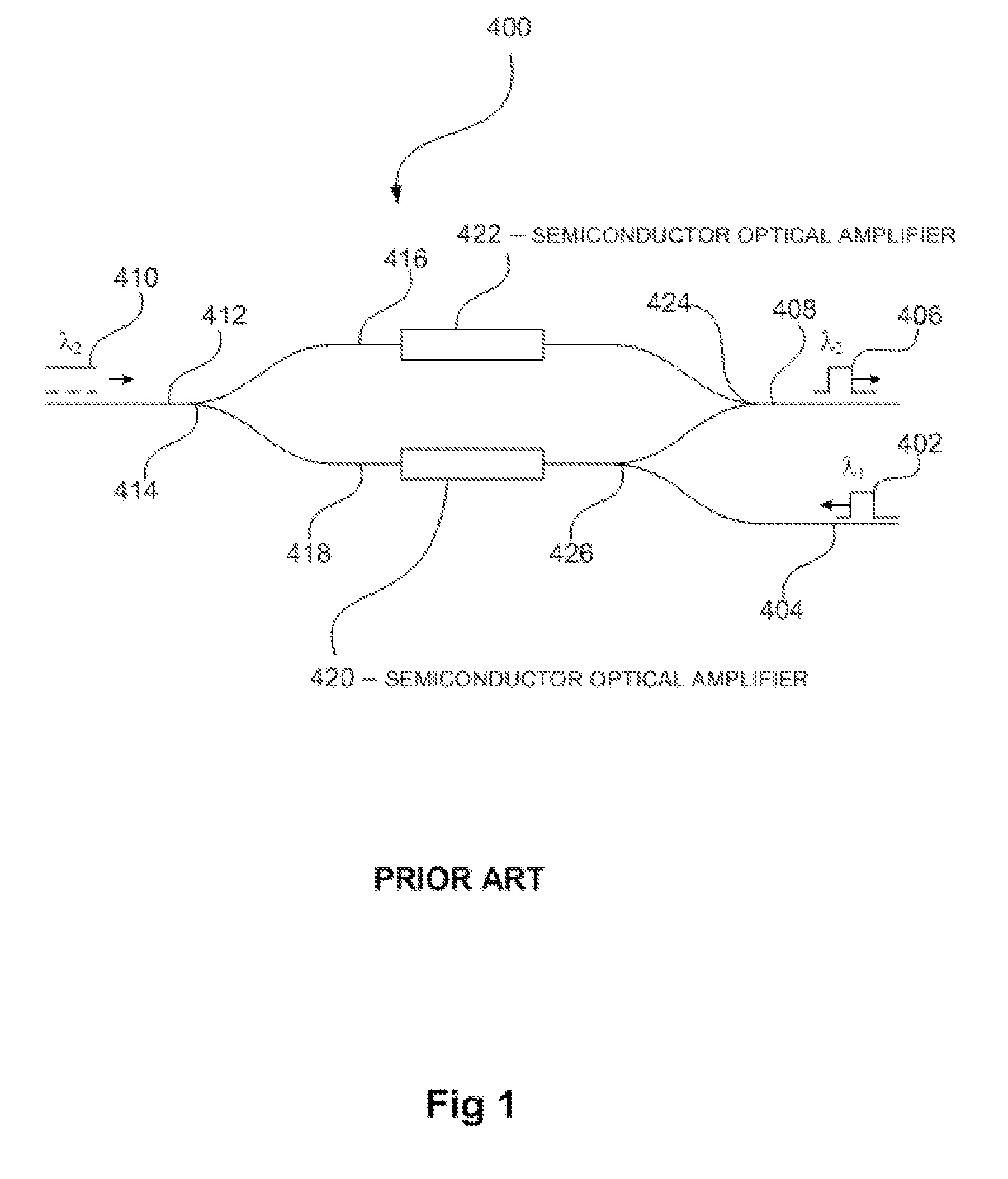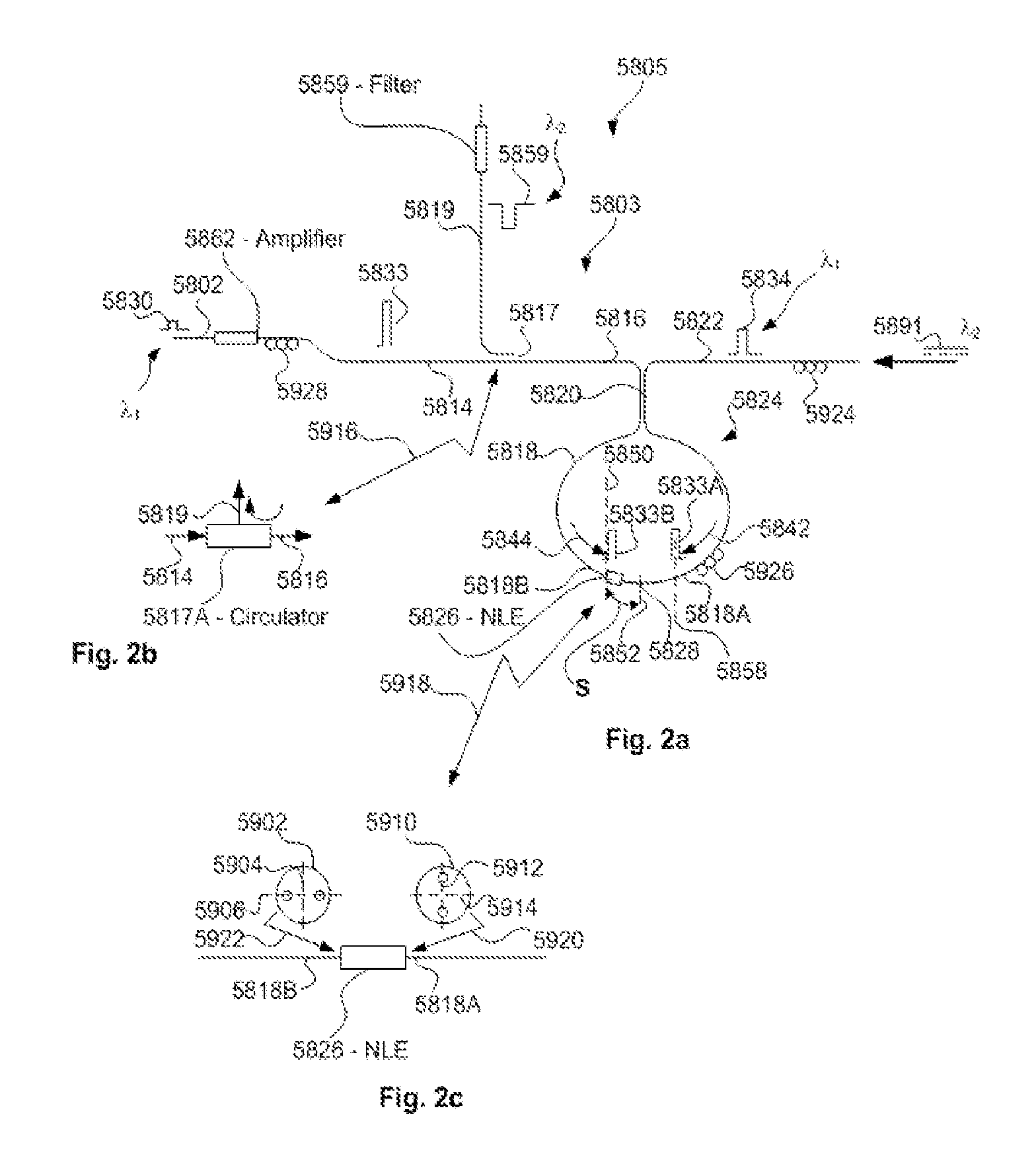All-optical phase, wavelength, and polarization-insensitive wavelength converters
- Summary
- Abstract
- Description
- Claims
- Application Information
AI Technical Summary
Problems solved by technology
Method used
Image
Examples
Embodiment Construction
—FIG. 2a
[0041]FIG. 2a illustrates a wavelength converter. Unlike the devices disclosed by the above Shahar et al. whose principle of operation is based mainly on the phase shift that the converted signal creates at the NLE in the optical loop, the principle of operation of the device of FIG. 2a, as explained below, is mainly based upon the polarization rotation that the converted signal creates at NLE 5826.
[0042] The device of FIG. 2a includes coupler 5820 having input terminal 5802 and output terminal 5822. The other two terminals of coupler 5820 form optical loop 5818 having nonlinear element 5826. Input terminal 5802 includes directing device 5817 that its terminal 5819 may include optional filter 5859. Output terminal 5822, optical loop 5818 and input terminal 5802 may include optional polarization controllers 5924, 5926 and 5928, respectively.
Principle of Operation—(a) Polarization Sensitive Wavelength Converter
[0043] First I will provide an explanation of a situation when...
PUM
 Login to View More
Login to View More Abstract
Description
Claims
Application Information
 Login to View More
Login to View More - Generate Ideas
- Intellectual Property
- Life Sciences
- Materials
- Tech Scout
- Unparalleled Data Quality
- Higher Quality Content
- 60% Fewer Hallucinations
Browse by: Latest US Patents, China's latest patents, Technical Efficacy Thesaurus, Application Domain, Technology Topic, Popular Technical Reports.
© 2025 PatSnap. All rights reserved.Legal|Privacy policy|Modern Slavery Act Transparency Statement|Sitemap|About US| Contact US: help@patsnap.com



